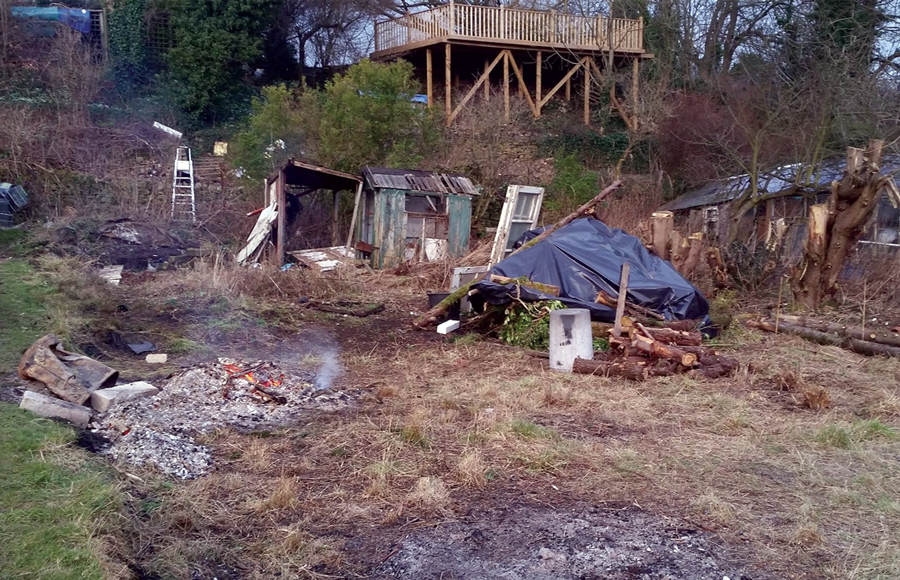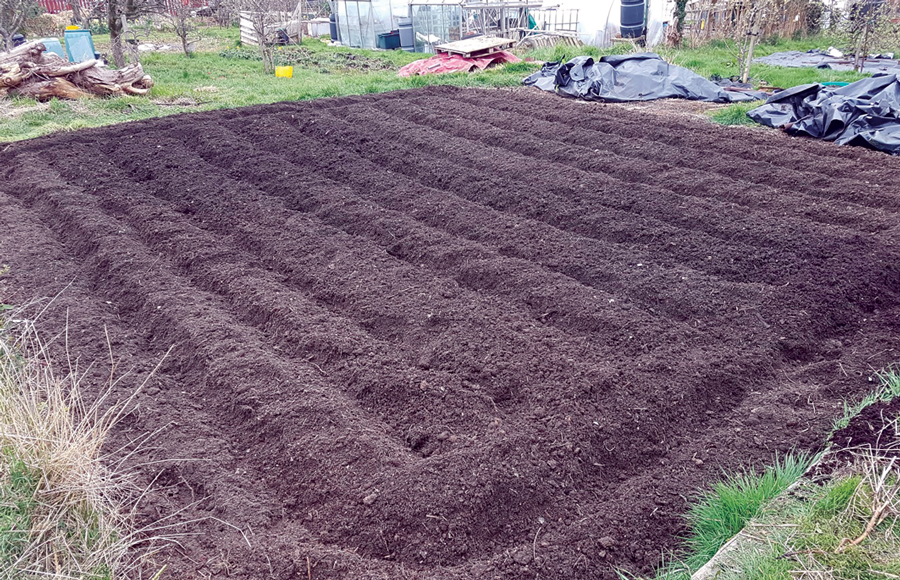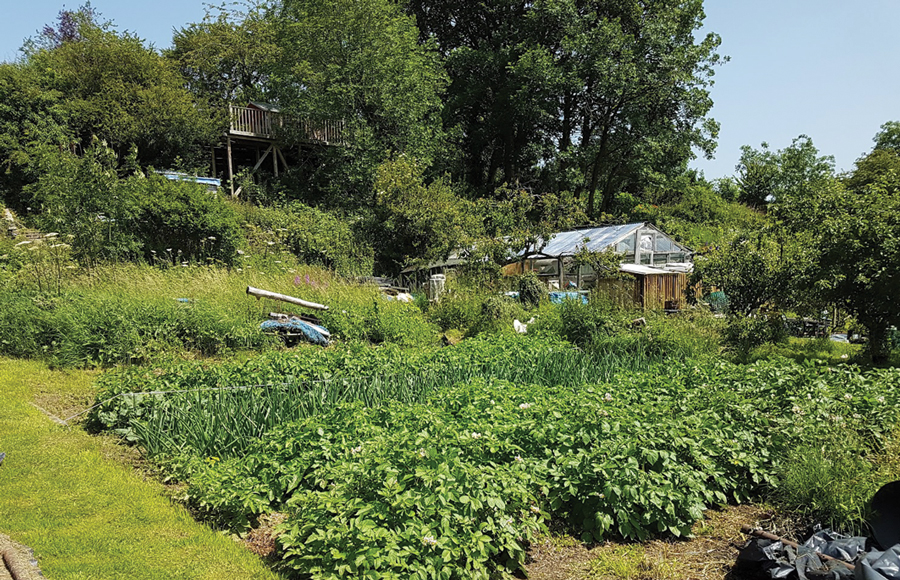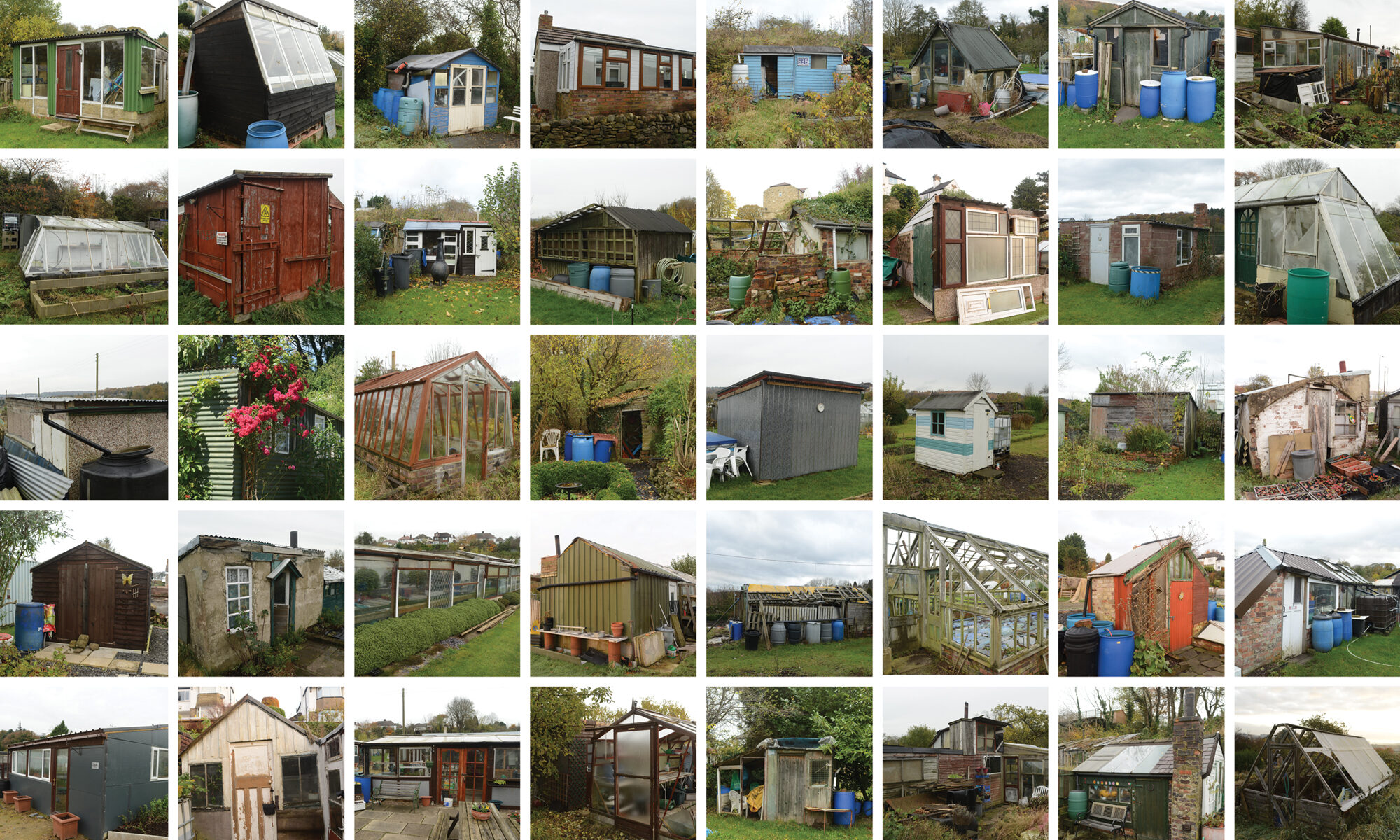A Bit About Soil…
by David Marshall
It doesn’t seem two minutes since those halcyon Christmas holidays of the 1970’s when the late Raymond Levrier would deliver 2 or 3 tons of rotten horse manure from the Bingley Auction Market to the allotment. It was our annual pilgrimage! My brothers and I would load the wheelbarrows and distribute, under strict instructions from my father, Terry Marshall, into trenches across the allotment ready for spring sowing. I remember dad’s prophetic and immortal words, “You have to look after the soil and It will provide for you.” Of course this remains true to this day and always will.
Now, some 45 years later, I continue the family tradition with Cottingley Bridge Allotments which can be traced back to the early 1900s.
Our allotments are on a terminal moraine, an area of glacial debris deposited at the end of the last ice age. It has resulted in a wonderful alluvium soil, ideal for most fruit and vegetables and has served gardeners for decades. However, our climate is changing. Gone are the cold winters and regular warm summers. We can no longer be assured of the seasons or we experience them all in a single day. It is not uncommon to have 10-15 weeks of dry weather or a month’s worth of rain in a week. These extreme conditions place huge stress on our soil and plants therefore understanding and managing our soil it is more important now than ever before.
Being an alluvium soil, it has a tendency to drain too quickly along with leaching out of essential minerals and compounds. However, there are a number of things we can do which go some way to maintaining a balanced soil structure and give our plants a fighting chance of coping with the unpredictable weather.
Our soil has a voracious appetite for anything organic – how many gardeners find their fence posts rotten within 2–3 years? Yet the same soil just loves manure – green manure such as grazing rye, winter tares, clover and mustard or animal manure mixed with straw or wood shavings.
Green manures are sown in the autumn and grow throughout winter. The advantage here is their roots hold moisture and prevent the leaching of essential minerals as well as suppressing those early spring weeds. These need to be dug in 2-3 weeks before you start sowing seeds as grazing rye initially gives off compounds which inhibit seed growth. Mustard can be sown throughout the growing season but must be turned in just before the flowers set allowing sowing or planting a couple of weeks after.
The more traditional method of maintaining our soil is to use large amounts of animal manure but before we rush to smother our gardens in manure there are some important considerations we need to be aware of.
As a general rule, there is only around 14lb of nutrient in a ton of manure comprising animal waste and urine. It is the straw or shavings, in conjunction with the animal waste, that actually provides plant food. By way of explanation, straw or wood shavings are a natural compound, in fact one of the most abundant compounds on earth.
It is called lignocellulose and is found in all plants.
When you have manure delivered into a pile it is teeming with bacteria. They start the decomposition process. As the bacteria multiply and start to eat at the manure and digest the lignocellulose it creates heat – steam rising from the pile can be seen in cooler weather. The centre of your manure pile can reach 130F. After several days, it starts to cool, fungus joins the party, worm eggs will hatch and in turn simply eat and digest everything in the pile. The result is a beautiful dark brown or black goo which is highly nutritious for soil and produces a plethora of plant foods. One of these is humic acid which help plant roots receive water and nutrients. High humic acid levels can dramatically increase yields and helps to neutralize soil PH.

To prove manuring works on our allotments I conducted an experiment. I bought the adjacent allotment which had remained uncultivated since the mid 1980’s (above). It had become overgrown with weeds and brambles which I cleared. I thoroughly rotavated it several times to break up the crust which had formed over years of weathering.
I then smothered the whole area with eighteen inches of fresh manure. To ensure a balanced soil, I also spread blood, fish and bone along with chicken pellets (high in nitrogen), a handful of each per square yard. I then left the site for one month to settle and become rain saturated. Next I spread several barrow loads of well-rotted manure teeming with worms. The site was covered over for sixteen months to allow nature to perform its magic. The covers were removed and the site tillered. It was then left for a further 2 weeks and tillered again (below).

The site was then planted up with onions, garlic, potatoes and broccoli – the results were outstanding (below).

However there are a few important considerations and warnings:
Animal Manure – Horse or Cows – A Warning!
1 – Animal grazing pastures are sometimes treated early in their life cycle with a herbicide to eradicate certain weeds which may be poisonous to horses or cows such as ragwort, buttercups and water dropwort. These herbicides are not phytotoxic to the crop or toxic to animals. When the farm animal eats the grass, containing traces of the herbicide, it simply passes through their digestive system and into the manure.
Some straw and hay is also grown in this way.
The herbicides in the animal waste or straw are not broken down by decomposition and can remain “active” in the manure for a couple of years. It is only removed by being flushed out by water. The rain or watering will continually weaken the chemicals till they are no longer effective where they then dissipate through the sub soil. It isn’t in all manure but something to be mindful of.
2 – Remember fresh manure containing straw or shavings is primarily lignocellulose which requires a significant amount of nitrogen and other compounds to break down. If you plant straight into soil where there is fresh manure, you will find your plants looking pale and lacking growth, for they are competing for nutrients – the same nutrients required by the manure to decompose!
I would recommend stacking manure, allowing it to become soaked through by the rain and then covered. When rotted sufficiently after 12–18 months and riddled with worms, distribute on the allotment, leave for a period of time for the rain to soak it then turn in. Whilst this is a precaution, I cannot offer any guarantee. As part of another test, I planted tomatoes into well-rotted manure – there was still herbicide present. This manifested itself through stunted top growth on a couple of plants.
Fresh Poultry Manure
Don’t ever use fresh poultry manure on your garden and plant straight into it. Fresh poultry manure has very high levels of nitrogen and ammonia and will burn your plants. Also, fresh poultry manure tends to be between 6.5 and 8 on the PH scale and unsuitable for some plants. Stack for 2-3 months and then use sparingly. This is not the same for the chicken pellets used as fertiliser. They can be used at any time as they are a balanced feed – just follow the manufactures instructions.
My Favourite Plant Foods – Comfrey and Seaweed
Comfrey
I grow, cut and rot down into a thick dark liquid and use as plant food. Late spring cuttings tend to be high in nitrogen, where as late summer cuttings tend to be high in potash. I dilute as a feed – 1 Part Comfrey to 10 parts water in cool weather and 1 to 20 in hot weather. Warning! It absolutely stinks, as our Chairman, Derek lodge, knows only too well being my neighbour.
Seaweed
My absolute favourite! If your ever go to the coast, look out for loose seaweed on the shore line or high-water mark, bag some up and bring it home. It is one of the best plant foods you can use. You will find its worth the car full of sand flies on the way home when you see your crops! I dig seaweed into the green house beds in autumn to rot down over winter. The crushed sea shells, mussels, small scallops and razor clams break down providing essential calcium, which is so important in preventing blossom end rot in tomatoes which tends to appear in long hot dry spells, such as the summer of 2018.
During summer I use both seaweed and comfrey as a thick mulch around tomatoes. Six inches of seaweed covered by about 12 inches of comfrey – tomatoes are one of the few plants that can cope with slight saline water, initially from seaweed but it is usually none existent after 2-3 watering. The comfrey turns slimy and keeps the seaweed moist, as they rot down. I simply water through them – no further feed necessary – and the flavour is sublime! But remember to never over water tomatoes, they are best being just moist enough or else you risk big tasteless fruit!
In conclusion, we have a wealth of information available through the internet providing a coherent understanding of just what soil is: organic matter, sand, fungus, bacteria, protozoa, nematodes, worms, beetles as well as a myriad of elements such as nitrogen, potash and many others.


